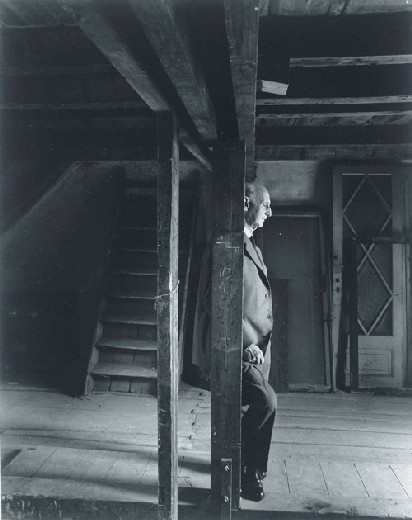|
By Katy Ritter Gastineau Elementary, 4th Grade I was scheduled to use the 4th grade elementary art kit, Centennial Bridge, but I’d never used it before. I didn’t check it out with a purpose to integrate it into our current social studies or science units of study, but I was excited to try an Artful Thinking Routine that would add some depth to our discussion, and hopefully deepen students’ engagement in the lesson. I decided that I would begin by showing the photographs of the Gastineau Channel/Douglas Bridge included in the kit, and use the Think/Puzzle/Explore routine. I hoped that showing the photographs without telling any information would invite students to try to build a narrative about the history of transportation in Juneau. I displayed the photographs on my whiteboard tray at the front of the room, and asked students to look at them carefully and quietly without talking. I began with the question, “What do you THINK you know about this topic?” Some of their responses:
Students seemed to understand that all of the photographs were connected, and they were telling a sequential story of the transportation used in the Gastineau channel. Then I asked, “What questions or puzzles do you have?
And the final question: "What does this artwork or topic make you want to explore?"
Students were very engaged and excited to find out that the reason the old bridge was replaced was because it was too small for the growing population and the new bridge is larger (this could be linked to why the roundabout was built about ten years ago!) They commented on the structure of each bridge and the difference in design, wondering why the old bridge had more artistic detail.
I introduced the photographs of the Centennial bridge and we compared it to the Douglas Bridge. We determined that it looks like a pedestrian bridge, which is why the art decorating the two sides of the bridge is in the footpath. We looked carefully at the symbolic images placed on either side of the bridge and thought about the difference between art that is functional (like a bridge, which has a form and a function) and the Centennial bridge, that includes style which carries symbolic MEANING. Students then created abstract bridges with 100 pieces of colored paper, creating patterns and lines. The results are as different as my students--each created their own pattern or arrangement of color and shape on the page.
0 Comments
by Tracy Goldsmith Dzantik'i Heeni Middle School My 8th grade Language Arts class students studied the Holocaust. They were assigned different Holocaust novels to read and they participated in literature circles using those novels. We started the unit by using the Step Inside Artful Thinking Routine with this image; This is an image of Otto Frank, on the opening day of the Anne Frank House as a museum in Amsterdam. I asked students to stand up and quietly place themselves into the same position as the person in this portrait. While they quietly, stood in position looking at the image, I asked them to image what this person might be thinking or feeling. I wanted them to come up with a story about this picture and this man. They stood silently for one minute and then they had to write a journal entry answering the same questions. Some student responses are below:
The unit involved many different activities related to the Holocaust. One resource we used extensively was the United States Holocaust Memorial Museum website (www.ushmm.org). To extend the Artful Thinking routine of “Step Inside,” the students were assigned a portrait and first person narrative project. They started by finding one victim or survivor whose story they wanted to explore more on the USHMM website. There is a link on the website that shows ID cards with pictures and information about victims and survivors. After finding a person that they wanted to study more, students had to read the information about them and then turn that into a first person narrative. This first person narrative would be read out loud to the class later in the unit. The activity of writing in first person really stretched their understanding of what an individual was experiencing during the Holocaust. Being able to read it out loud to an audience, made that story come alive. Many students were emotionally touched by the narrative readings.
|
ArtStoriesA collection of JSD teachers' arts integration classroom experiences Categories
All
|
|
|
Artful Teaching is a collaborative project of the Juneau School District, University of Alaska Southeast, and the Juneau Arts and Humanities Council.
|







 RSS Feed
RSS Feed